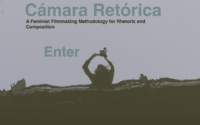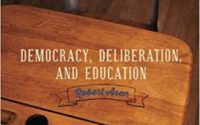Cherokee Healthcare Policies, Tribal Memory, and the Ghosts of Sterilization Abuses
Indigenous scholarship on healthcare access has traditionally examined economic barriers to adequate healthcare, citing language differences as well as social expectations and mistrust of practitioners. Cherokee female patients are more specifically relegated as amorphous patients, numerated as either census statistics or mythologized figures depersonalized from individual medical experience. These women are not remembered for their authentic experiences but are displayed through the family-planning literature of clinics in the Indian Health Services during the 1970s. In short, tribal memories of family are de-emphasized for the purpose of perceived economic gains for both indigenous families and their communities. Memory, and more importantly, re-memory of tribal customs and expectations toward indigenous family planning and its place in medicine, allows rhetoricians of health and medicine to understand the tension between traditional forms of literacy and orality in memory as a rhetorical practice. In this article, I examine excerpts from the General Account Office 1976 report1 on consent issues in Native sterilization cases and student survey results from the Cherokee Nation’s continuing education course on tribal history for medical personnel that was conducted in the early 2000s. By understanding these documents through memory and re-memory as a rhetorical function, rhetoricians of health and medicine may possess a more nuanced understanding of consent and literacy within a tribal context.
Understanding the Context of Communication
To understand the impact of these sterilizations on Native communities, we may turn to the U.S. General Accounting Office (GAO) report to ascertain how consent becomes a matter of memory in both written and oral forms. Published on November 4, 1976, this report discovered sterilizations on Native women from 1973 to 1976 and documented variances in consent forms delivered to Native patients. The authors describe how:
Several different consent forms were used. The most widely used form did not (1) indicate that the basic elements of informed consent had been presented orally to the patient, (2) contain written summaries of the oral presentation, and (3) contain a statement at the top of the form notifying subjects of their right to withdraw consent. One consent form document did meet the Indian Health Service requirements, but when used was filled out incorrectly. (Office 4)
The relationship between memory and documentation is deeply embedded in the GAO report’s account and recommendations, but the GAO report also alludes to the importance of orally delivered information for patients to fully understand and give consent. I argue that consent within the clinical encounter should be both contextual and dialogic, with attention to the patient’s linguistic and cultural background. This attitude is complicated when GAO authors suggest an oral presentation, but whose language should be spoken is less clear. Beyond consent forms is the issue of medical documentation as an institutional practice that preserves and archives patients’ interactions and knowledge.
Scholars in rhetoric of health and medicine (RHM) who specialize in professional documentation can provide context for understanding Cherokee women’s history of ill-informed consent and medical coercion. This expertise can rely on the wealth of literature on institutional management and documentation, both features lacking or compromised as evidenced by the GAO report. Logue and Wear’s 2011 collection, Institutional Integrity in Health Care, offers a documentation focused definition for consent through “diagnosis notes, discharge summaries, and summaries generated at the point of major decisions or turning in a patient’s care [that] need to become more centered on and specific to what the patient was experiencing: what they were told and what they understood, whether they were ambivalent or reticent in some regard, etc.” (104). Eliminating patients’ confusion and providing multiple channels of institutional documentation based on patients’ understanding and perspective could have perhaps reduced the inconsistent documentation of clinics’ sterilization abuses and consent forms.
Kathleen J. Ryan articulates the power of memory as a hermeneutic device that can be useful to RHM on indigenous issues. She explains how “reclaiming this moment in the history of rhetorical memory reintroduces memory as a process of imagination and invention” (37). Although Ryan’s work addresses memory’s fractured and generative relationship to life writing, her thoughts on imagination and invention are significant when viewed in an Indian health context and institutional documentation. Indian health practitioners developing coursework for the Cherokee Nation have recognized the role of invention and imagination when crafting exercises and modules that test students’ knowledge of tribal history and assumptions of Native patients. Contextualized in the tribal memory of sterilization, memory and forgetting are powerful devices to critique institutional policy and tribal medical education. Memory, then, is not only one of the canons of rhetoric suitable for pedagogy but a component of understanding the impact of such policies on Cherokee patients and tribal pedagogues who design medical courses for physicians working in Cherokee health systems. Additionally, the act of memory regarding Cherokee history in healthcare courses opens possibilities for understanding how a rhetoric of memory is still an act of “outside” knowledge that is not always acknowledged in formal academic discourse and educational programs.
The Unremembered and Silent Patient in Cherokee Healthcare
Memories of consent, both written and oral, are inextricably bound with silence as a rhetorical act. As Jane Lawrence notes in her scholarship, often, Native patients were given either confusing or conflicting forms or were disabled by anesthesia or sedatives during difficult procedures or childbirth during the consent process (407). Complicating this disturbing trend are occasional notions of indigenous patients as noncompliant through their silence or reticence to disclose. Contemporary literature on transcultural communication in nursing, however, does strive to reduce these assumptions, which researchers in RHM would do well to consult. Margaret M. Andrews and Joyceen S. Boyle’s textbook, Transcultural Concepts in Nursing, explains Native patients’ values of unity as a guiding principle for treatment decisions, clarifying how “Questions about abortion, the use of drugs, giving and receiving blood, the right to life, euthanasia, and so on do not have dogmatic ‘yes’ or ‘no’ answers; rather, answers are based on the situation and the ultimate unity or disunity that a decision would produce” (490). Silence in the clinical setting may be in response to both culturally proscribed inhibitions and memories from medicalized abuses, such as past forced sterilizations. Yet, silence as an act of withholding communication does inform us of how collective or individual memory influences rhetorical choice. Whether from fear, uncertainty, or defiance, the rhetor-patient communicates her silence not as the absence of emotions or personal and collective history but, perhaps, despite this history. Indigenous rhetoricians and rhetoricians of health and medicine possess potential to engage with healthcare professionals in assisting how rhetorical silence functions as a vocal or epistemological stance that suggests personal and tribal hesitations regarding western medical care.
Additionally, rhetoricians of health and medicine may consider how silence in the clinic mirrors the silence surrounding Cherokee women’s experiences in the aftermath of nonconsensual sterilizations in the 1970s. On a systemic level, “GAO personnel did not interview any Native American women who had been sterilized during this period because they said they ‘believe[d] that such an effort would not have been productive’” (Lawrence 407). Incomplete documentation not only depersonalizes the sterilization experiences but negates Cherokee patients as women with no textual or rhetorical representation beyond the child-like pictorial illustrations surfacing in Sally J. Torpy’s article on IHS policies of the 1960s. Torpy explains that physicians “were not taking the time or precaution to have a witness present who spoke the woman’s language. This led to enormous misinformation and neglect of a woman’s right to know and understand in her own language what the operation involved” (13). The absence of Native health literacy, or even literacy in a broader sociological sense, may have hindered doctors from providing the necessary documentation to Cherokee women.
Informed consent policies have minimized patients’ misunderstanding of their medical rights, with scholars such as Andrea Smith who have identified how population control tactics have re-emerged in subtler medical interventions. Writing in her contribution to Reading Native American Women: Critical/Creative Representations, Smith addresses continued medical interventions through numerous contraceptive drugs, such as Depo Provera. Smith explains that:
While sterilization abuse has been curbed somewhat with the institution of informed consent policies, it has reappeared in the form of dangerous contraceptives such as Norplant and Depo Provera. These are both extremely risky forms of long-acting hormonal contraceptives that have been pushed on Indian women. Depo Provera, a known carcinogen that has been condemned an inappropriate form of birth control by several women’s health organizations, was routinely administered to Indian women through IHS before it was approved by the FDA in 1992. (71)
Smith’s reminder of historical sterilization policies considering Depo Provera and Norplant prescriptions evoke a mutated form of memory of tribal injustice. While both contraceptives suggest memories of sterilization procedures for Indian women, Smith notes the more insidious impact of contraceptives versus surgery. Yet, these medications pose the question of whether Indian women are still regarded as test subjects in a more covert form of population control. In Smith’s assessment, this attitude toward Indian women as test subjects continues and furthers the memory of population control in subtler ways through the invasive nature of pharmacology.
A family planning tract from the IHS clinics in the 1960s provides context about the relationship between economics and indigenous family planning. Sally J. Torpy (2000) comments on the rhetorical and visual maneuvers in 1960s family planning pamphlets that connect declining tribal fertility rates with increased economic opportunities. Torpy writes that the objective of a selected pamphlet “illustrates a before sterilization picture—a caricature of haggard parents with only one horse and ten children—next to an after sterilization image—a cartoon of happy erect parents surrounded by one child and many horses. This type of paternalistic mindset was widespread throughout the nation” (13). What is striking about the pamphlet is its insistence on population control as a matter of containment. The family, then, is not contextualized as a tribal unit with its own history and lineage but as a sociological case that overburdens the healthcare system. The sketches are vague, flattened, and childlike, each suggesting practitioners’ understanding of tribal families only in terms of economics, of childbearing as a fiscal risk and impediment to families’ financial wellbeing. Page twelve of Torpy’s article catalogues an example of IHS literature. The pamphlet’s image compels viewers to observe the Indian family as an equation that triangulates economic burdens with financial rewards, but only if families follow the clinic’s instructions. Beneath the cartoon lies assumptions about indigenous poverty and health communicated through mechanistic means. A more dialogic approach to clinical conversation may undermine these assumptions such cartoons and public literature perpetuate.
Reforms in Current Cherokee Clinical Policies: Scholastic and Institutional Models
Despite this history of sterilization, however, there are more current Indian healthcare reforms that seek to undermine previous assumptions. The Cherokee Nation has conducted efforts to remedy this gap for medical professionals. Instituted in the early 2000s, Dixon and Iron’s Strategies for Cultural Competency in Indian Health Care details how educators and historians in the Cherokee Nation developed a required course on tribal history mandated for all healthcare officials receiving educational instruction from tribal clinics. The course functions as a microcosm of rhetorical invention and consensus we may emulate in scholarship in RHM. A noteworthy feature of the course is its emphasis on roleplaying that blends invention with indigenous judicial protocols. The class is “asked to assume the role of the Tribal Council. Given the political circumstances, they are asked to identify and evaluate their options and to develop strategies for the tribe” (Dixon and Iron 40) in scenarios that mimic a kind of performative approach to the scientific method. A more comprehensive application of this role-playing for female Cherokee practitioners and patients would consider past healthcare decisions, both tribal and Federal, and reconceive the differences of patient reporting and medical documentation considering women’s health. Such role-playing operates in a hypothetical rhetorical sphere, where students can both invoke Cherokee history and future tribal policies.
Course evaluations from healthcare professionals enrolled in the course disclosed how tribal histories revealed current patient attitudes of disclosure, non-compliance, and distrust toward government policies. An anonymous student evaluation reveals how the course “‘gave me some commonality’” (Dixon and Iron 52) with patients, while one doctor explained, “‘It softened the edge of the interface’” (Dixon and Iron 52). “Interface” suggests the course participants have crossed a boundary of understanding between Cherokee patients and tribal history. Still, the responder’s descriptor of interface is telling, revealing the female Cherokee patient as absent in course evaluations. She exists, or, rather, doesn’t, in the respondent’s observations, devoid of personality, cultural affiliation, personal caseload history, and even gender.
I suggest RHM scholarship should consult historical narratives preserved in interviews as inspiration for recovering memory, rather than diagnostic instruction, as an integral feature to Cherokee clinical rotation. Modern clinicians may attune themselves to historical accounts of the intersection of Cherokee and Anglo-American medicine, noting how silence and memory concerning historical practices of listening as a medical phenomenological process deprives current healthcare policies. This rhetoric recognizes such histories as holistic and as heuristics to acknowledge how silence concerning Cherokee medical practices and institutional healthcare experiences denies current clinicians of valuable diagnostic material. We can consider diagnostic listening as an intermediary between preconceived notions of patients’ symptomology and the cultural experiences that may redefine the clinician’s presentation of treatment options. The implications extend beyond clinical consultation periods but also to the acquisition of Cherokee women’s language, and perhaps lack of health literacy, in addressing their health needs.
Conclusions: A Reassessment of Cherokee Dialogic Practices in Modern Clinics
A reassessment of Cherokee dialogic practices reinforces listening as a tenet not only of doctor residency training but also how diagnostic material can be lost in transmission. Accounts of Cherokee medical practices reinforce listening as both an individual and conversational diagnostic tool. In conceiving Cherokee medical discourse as an experience in auditory communication and memory, scholars invested in RHM can approach patient and clinician conversation as not “exactly the objects and discourses we use, but [that] we are materially and conceptually intertwined with them” (Fountain 194). Fountain’s analogy is a useful one. By evoking the adaptability of the body, Fountain acknowledges discourse’s effect as a means that we can understand Cherokee women’s histories as intertwined with current and past attitudes toward women’s healthcare.From the perspective of current Cherokee policies and practices, rhetoricians may conceive both the silence surrounding Cherokee female patients as a potential bodily and linguistic choice, given past sterilization abuses, lacking education of medical terminology and procedures, and limited funding for healthcare resources. Practitioners in RHM invested in indigenous scholarship can explain silence as a possible pedagogical tool for clinicians working in Cherokee healthcare settings. Furthermore, silence and memory should be reconsidered not solely as an absence of diagnostic information but rhetorical devices to consider how collective medical abuses may influence current patient reporting.
Notes
- Following the exposure of the GAO report, Brint Dillingham’s 1977 article published in the American Indian Journal stipulated that “only four of the Indian Health Service areas—Aberdeen, Albuquerque, Oklahoma City, and Phoenix” (27) were examined and that “in those areas alone over 3,000 sterilizations were performed during fiscal years 1973–76 (3,406 total and 3,001 on women of child-bearing ages 15–44)” (27) in an astonishing record. return
Works Cited
- Andrews, Margaret M., and Joyceen S. Boyle. Transcultural Concepts in Nursing Care. Wolters Kluwer, 2016.
- Dillingham, Brint. “Indian Women and IHS Sterilization Practices.” American Indian Journal, vol. 3, no. 1, 1977, pp. 27–28.
- Dixon, Mim, and Pamela E. Iron. Strategies for Cultural Competency in Indian Health Care. American Public Health Assoc., 2006.
- Fountain, T. Kenny. Rhetoric in the Flesh: Trained Vision, Technical Expertise, and the Gross Anatomy Lab. Routledge, Taylor & Francis Group, 2014.
- Lawrence, Jane. “The Indian Health Service and the Sterilization of Native American Women.” The American Indian Quarterly, vol. 24, no. 3, 2000, pp. 400–19, doi:10.1353/aiq.2000.0008.
- Logue, Gerald, and Stephen Wear. Institutional Integrity in Health Care, edited by Iltis Ana Smith, Springer, 2011.
- Office, U.S. Government Accountability. “Investigation of Allegations Concerning Indian Health Service.” U.S. Government Accountability Office (U.S. GAO), 4 Nov. 1976, www.gao.gov/products/HRD-77-3. Accessed 24 June 2019.
- Smith, Andrea. Reading Native American Women: Critical/Creative Representations, edited by Hernández-Avila Inés, Altamira Press, 2005, pp. 63–77.
- Torpy, Sally J. “Native American Women and Coerced Sterilization: On the Trail of Tears in the 1970s.” American Indian Culture and Research Journal, vol. 24, no. 2, 2000, pp. 1–22, doi:10.17953/aicr.24.2.7646013460646042.
Keywords: medical rhetorics, professional writing, indigenous rhetorics, patient advocacy literature, indigenous health curriculum
Cover Image Credit: https://allen1561.wordpress.com/2013/07/07/uncovering-the-atrocity/




 Caroline Jennings is a third year PhD student in rhetoric and composition at Purdue University. Her research interests include medical rhetorics, ballet rhetorics, writing across the curriculum, research methods, and professional writing. Her master’s thesis, “Kinetic Challenges and Rhetorical Agency: Negotiations Between Costuming, Robotics, and Choreography in Ballet Rhetorics” contextualizes the rhetorical history of ballet pedagogy with new experiments in robotics and wearable costumes to investigate kinetic experiences in dance. At Purdue University, she has taught introductory composition and currently teaches business writing. She is also a tutor at Purdue University’s Writing Lab.
Caroline Jennings is a third year PhD student in rhetoric and composition at Purdue University. Her research interests include medical rhetorics, ballet rhetorics, writing across the curriculum, research methods, and professional writing. Her master’s thesis, “Kinetic Challenges and Rhetorical Agency: Negotiations Between Costuming, Robotics, and Choreography in Ballet Rhetorics” contextualizes the rhetorical history of ballet pedagogy with new experiments in robotics and wearable costumes to investigate kinetic experiences in dance. At Purdue University, she has taught introductory composition and currently teaches business writing. She is also a tutor at Purdue University’s Writing Lab.